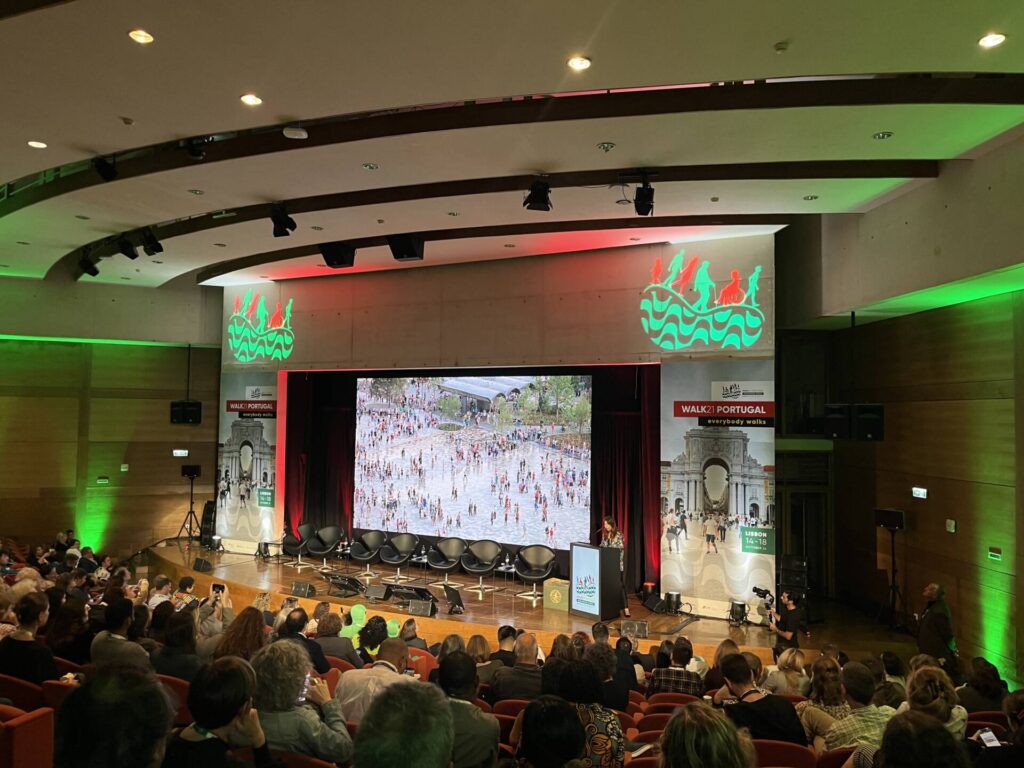Conference / Walking
Walk21 Recap
Earlier this month, I attended the Walk21 Conference in Lisbon with my colleagues Dagmar Köhler and Robin van der Griend. It was a great experience, not only because it was my first time attending Walk21, but also the first time I presented at a conference! Together with Dagmar and Robin, we hosted three sessions on designing streets and intersections to be safer and more comfortable places for people to walk and enjoyable places to stay. It was an incredible week filled with inspiration for improving walking in cities and communities worldwide.
During the week, I reconnected with people I knew from previous conferences or events and met new people from all around the world. Everyone came together for one week for one goal. To share ideas on how to make our communities better places for people to walk.

The slogan for the Walk21 conference was #everybodywalks, which was the theme throughout the conference. Everyone is a pedestrian the moment they step outside of their door. Whether they walk one minute to drive or walk one hour to school, everyone walks. And we as practitioners need to ensure that there are safe and comfortable places for people to walk that are also enjoyable, interesting, and beautiful.
Three key themes emerged during the conference that I’m eager to integrate into our work at Mobycon. These themes have further fueled my commitment to our mission, and I’m excited to share them with you. I hope you had a great week!
Start with School Streets
The main theme that I noticed during the Walk21 conference was the importance of encouraging walking in children and the effectiveness of implementing School Streets. School Streets are the partial or temporary closures of the street in front of or surrounding the school, creating more space for children to play, encouraging parents to walk their children to school, and decreasing traffic congestion and pollution in front of the school. School Streets have been gaining popularity recently in places such as Paris or Tirana (Figure 1), where cities invest millions in building temporary and permanent school streets. During the conference, practitioners from around the world, from Turkey to Ghana, shared examples of their school streets. They encouraged us to do the same, saying that starting at school is an easy place to begin politically, as everyone wants to ensure that children are safe and healthy. In addition, encouraging walking at an early age can help build healthy walking patterns later in life.
You can read about Mobycon’s work on School Streets and safe routes to school here.
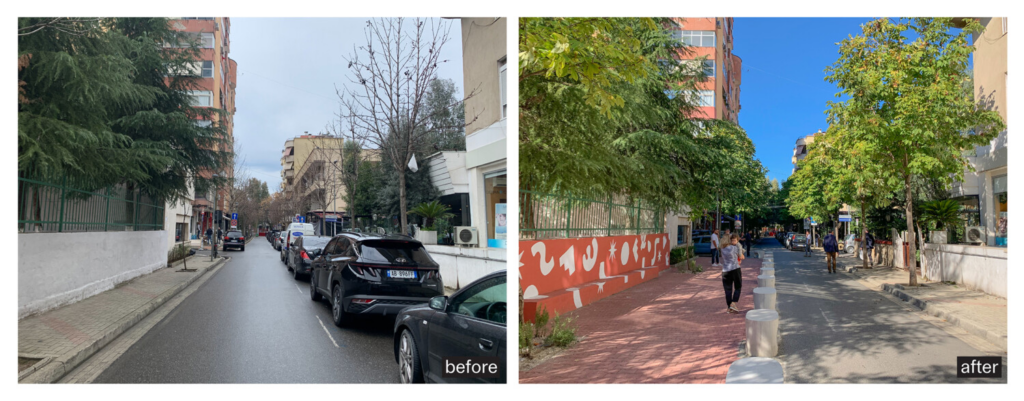
Walking Policy is Good Policy
Throughout the conference, representatives from various countries and cities presented their walking policies and master plans. Even countries such as the Netherlands, known as a cycling country, published their first National Walking Masterplan this month and presented it at the conference. Jim Walker, the founder of the Walk21 Foundation, gave an inspiring closing plenary where he emphasized that walking is a good policy and is finally getting the recognition it deserves, noting that 62% of countries globally now have a national walking policy.
More Space for People Walking
In addition to walking masterplans and policies, cities and organizations presented their guidelines on designing streets for walking. Organizations such as CROW, who are known for their Dutch Design Manual for Bicycle Traffic published their first Design Guide for Pedestrians. Like the Bicycle design manual, they have five criteria for a well-functioning pedestrian network: direct, accessible, readable, safe, and attractive. Most notably, they recommend that there should be two pedestrian networks, a basic and a main network. The sidewalk must be at least 2 meters wide for the Basic network. For the main pedestrian network, the sidewalk must be more than 2 meters wide to allow for amenities and more space for people walking, playing, and enjoying. This distinction between different street categories within the network and requiring more space for people walking was the same in other city guidelines, such as the city of Rotterdam, which developed their guidelines separately. Recommending more space in major bike networks is a growing theme within cycling design to accommodate high numbers of cyclists and different vehicle speeds, weights, and widths. They indicate a need to reclaim space from cars and increase space for cyclists and pedestrians.
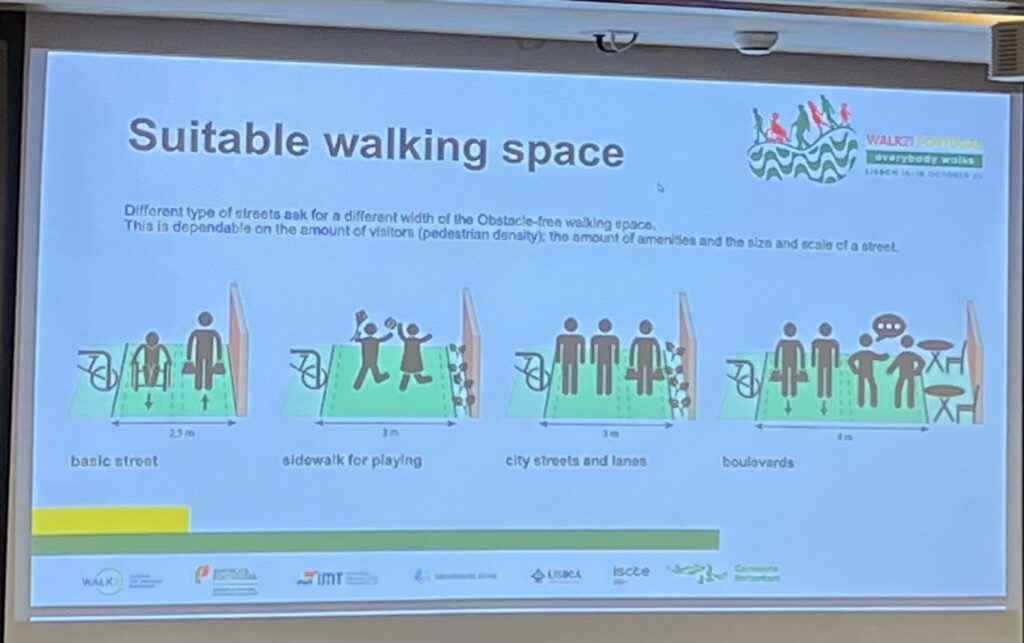
Design Climate Adaptive Streets
The final theme that I found more interesting was the combination of street design and climate adaptation. I studied environmental studies during my bachelor’s degree, and this combination fascinates me. In an inspiring Pecha Kucha session, people from around the world shared examples of how street design can help fight climate change and projects and initiatives they are working on. GDCI presented a project they are doing at a school in Ghana where most of the students walk to school, and the cars park right next to the school classroom windows, emitting pollution directly into the classrooms. A new design is being proposed and implemented to solve these issues this year. The design will move the parking spaces away from the school to create more space for students to walk to the school and play in front of the school and remove the direct pollution into the classrooms. In addition, greenery will be planted around the school to help absorb the pollution from the surrounding cars.
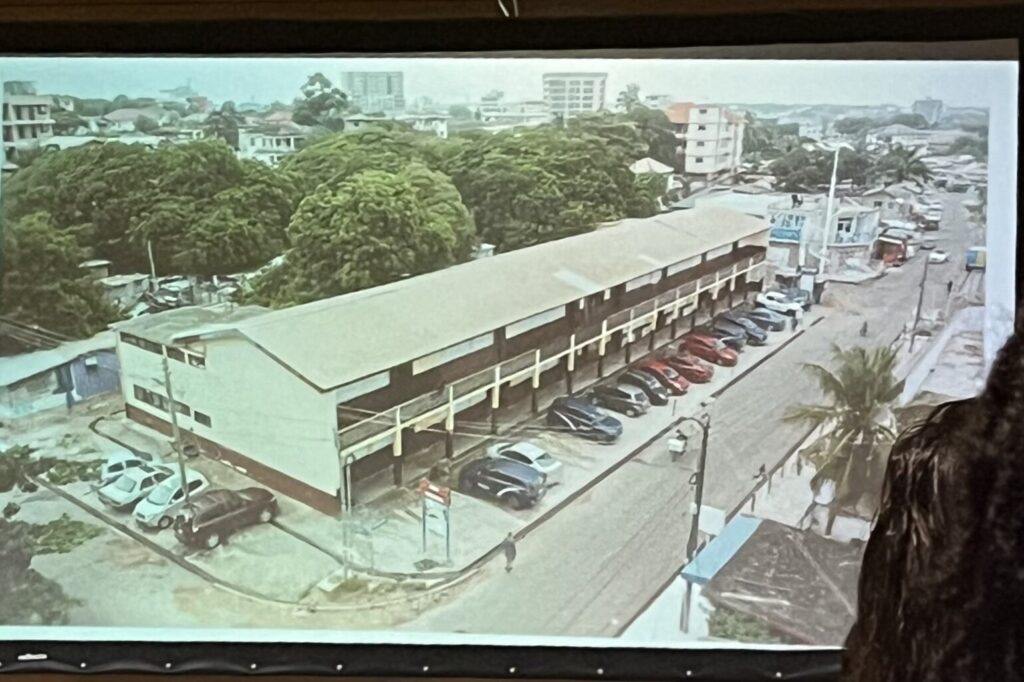
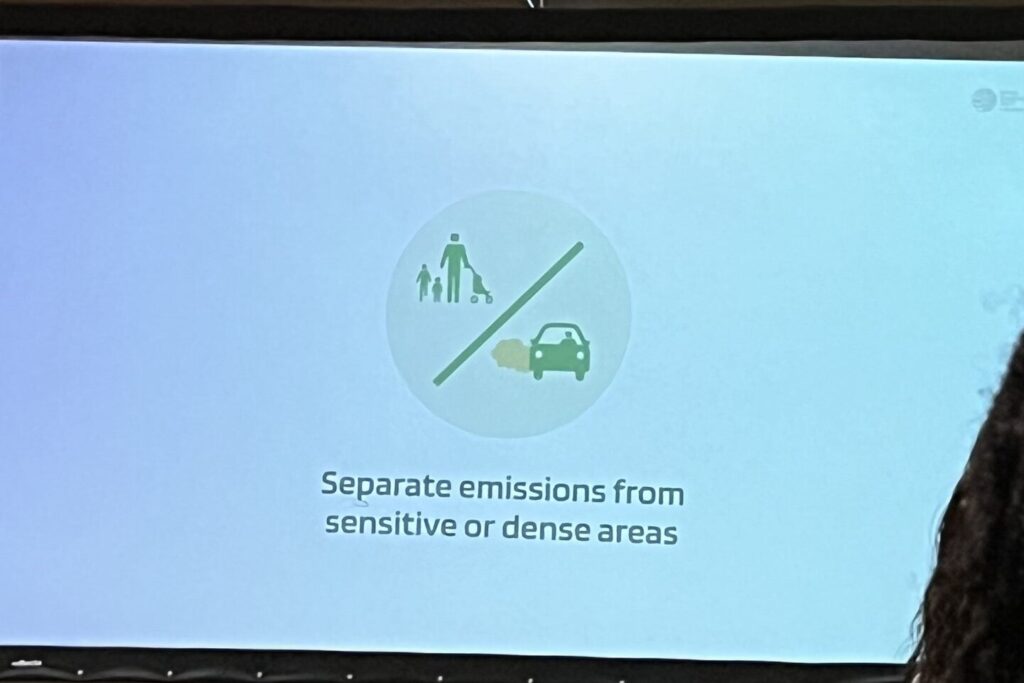
A second project presented by Goudappel was a new Climate Adaptation Label, where they give a rating from A to E on how climate adaptive a street is based on its ability to handle increased drought, rain, and heat. These three things will increase dramatically due to climate change, and cities want to be more resilient to climate change and keep people safe while walking. They need to ensure that their streets can handle these three things.
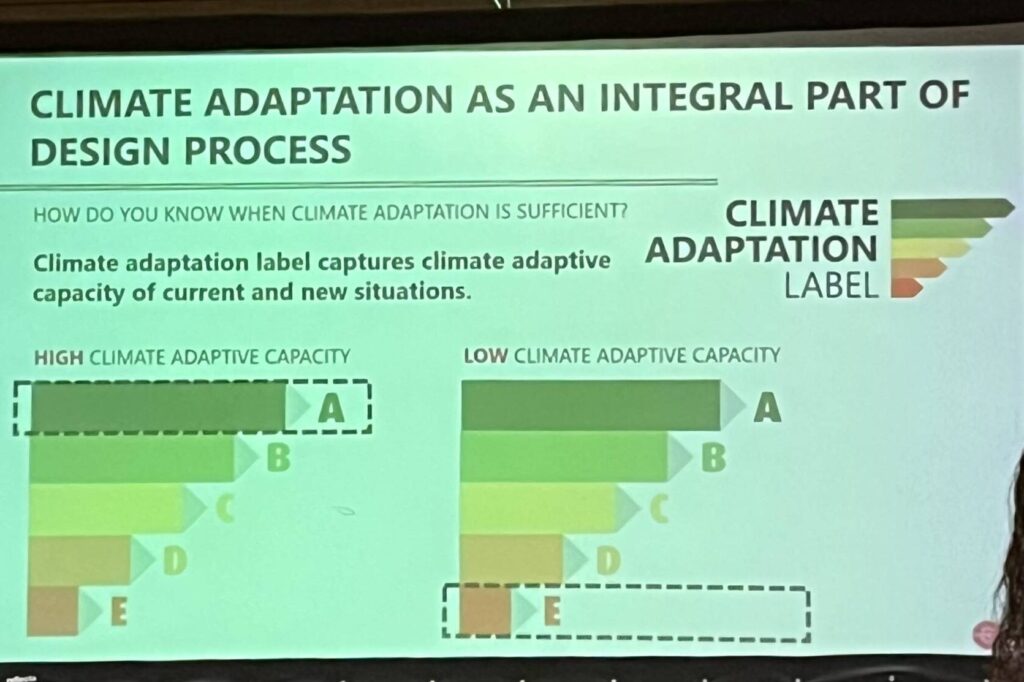
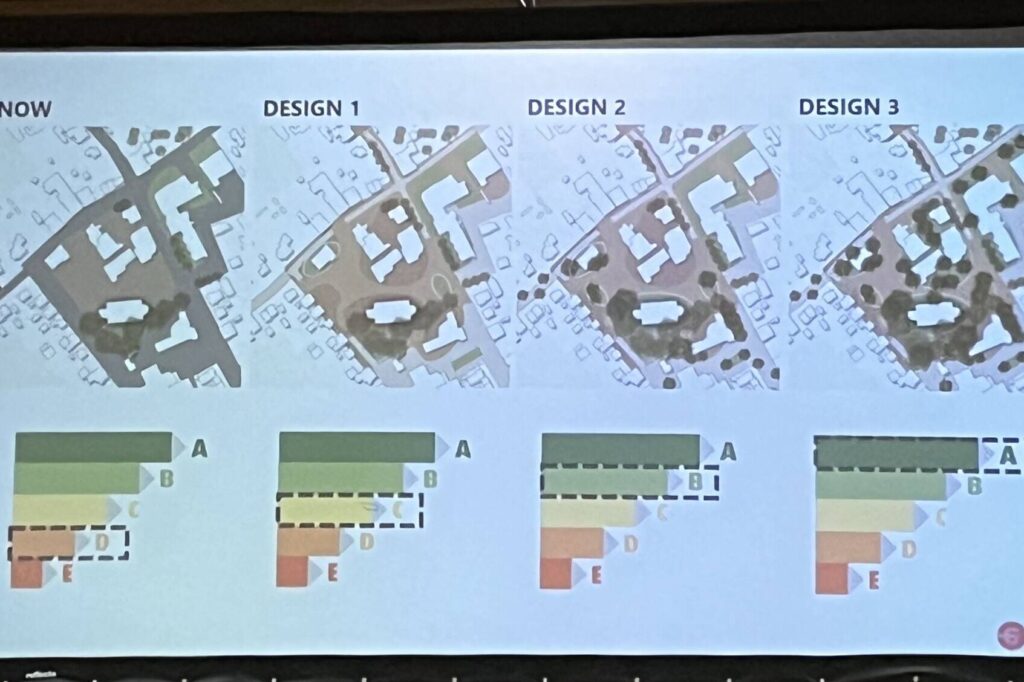
Are you curious how you can help shape walkable spaces in your area? We’re here to support you. Whether you’re interested in strategies, need insights, or just want to dive deeper into making walking safer and more accessible, feel free to reach out. Let’s walk towards change together.
See you next year in Tirana! 👋
